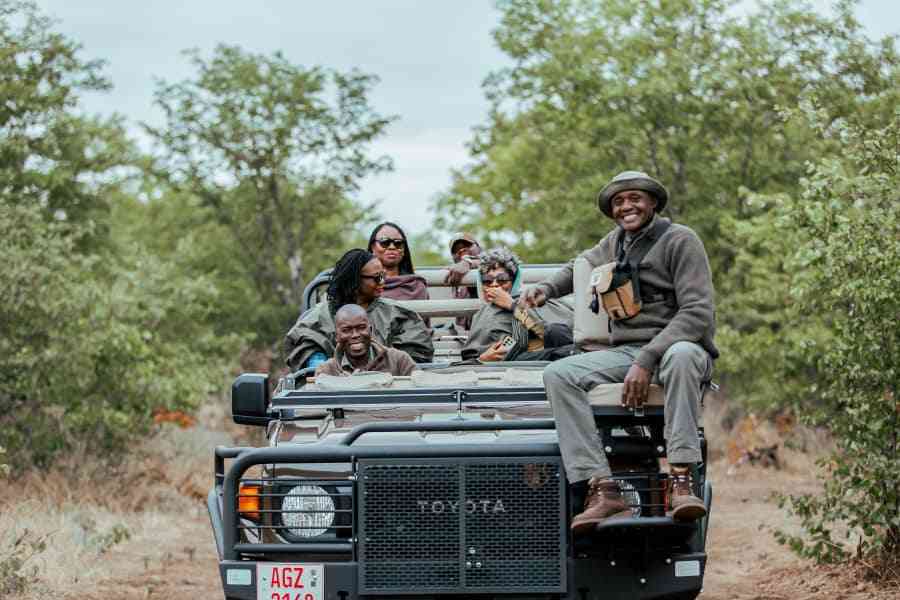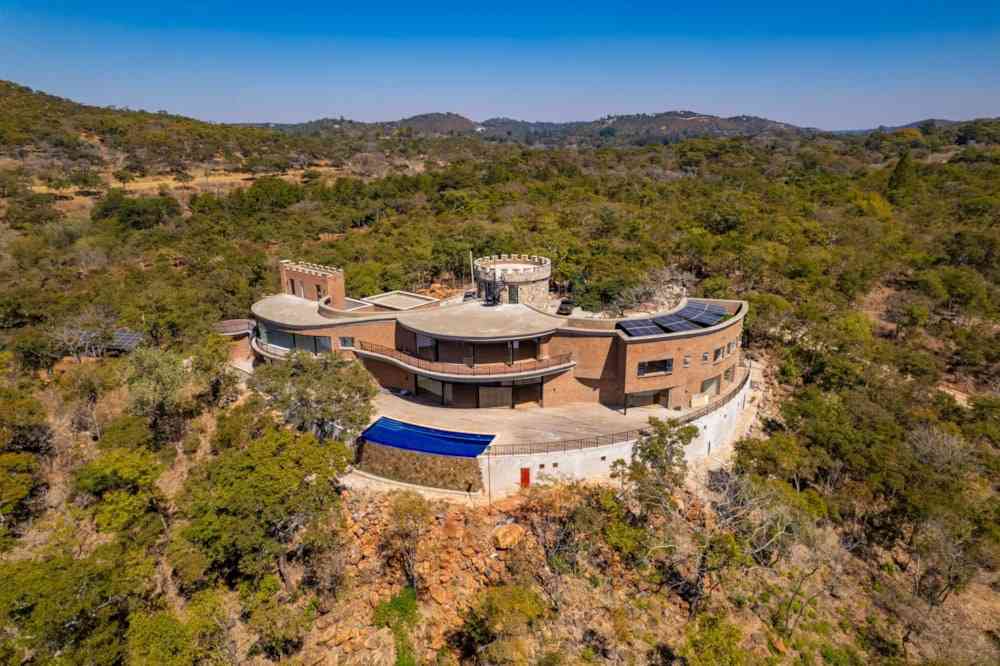
The heat hits most people first. Not the searing, dry heat of the highveld, but a thick, sun-baked blanket that carries the scent of mopane leaves, red earth and unending plains of savannah woodland.
This is the Zimbabwean Lowveld, a vast, rugged wilderness stretching across the country’s southeastern corner.
It’s a place of giants, sandstone cliffs, hectares upon hectares of sugar cane estates and some of Zimbabwe’s, and the continent’s most successful conservation efforts.
Our crew arrived at Singita Pamushana Lodge, an architectural masterpiece carved into a kopje overlooking the Malilangwe Dam.
Our mission was not only to film luxury hospitality through the lenses of the Singita brand, but to capture the sheer dedication behind the Malilangwe Trust, the non-profit engine that Singita Pamushana’s ecotourism funding sustains.
What we found when chatting with Mark Saunders, executive director of Malilangwe Trust, was one of Zimbabwe’s most compelling unique selling points for a growing number of tourism and safari operators: a true, uncompromising marriage between pristine wilderness, critical conservation success, and profound exclusivity.
Malilangwe Game Reserve has garnered significant acclaim as home to one of the continent’s highest densities of the critically endangered black and white rhinos, species that were locally extinct here just three decades ago.
Today’s success story is not accidental; it is built on rigorous, science-based monitoring and unrelenting protection.
- Travelling & touring: Matobo Hills conquers world tourism
- Voter registration must intensify
- African Sun floats on ‘gain on bargain purchase’
- Travelling & touring: Matobo Hills conquers world tourism
Keep Reading
The intensity of ongoing conservation efforts will very much elevate your safari experience.
For our crew, a few days experiencing the opulent comforts of the lodge, its soaring architecture, the private pools carved into the rock and the personalised service, all culminated in what can be described as indulgence, juxtaposed with what feels more like a privileged investment.
It is through such an experience, when one can delve into the details of why hospitality delivered at this level, goes beyond satisfying the discerning guest.
Simply put, every five-star meal, every silent sunrise overlooking the dam, and every dollar spent on this experience, translate into a direct financial contribution to the security teams and the community development initiatives, like the educational programmes and the daily feeding scheme that supports thousands of local schoolchildren.
The unique partnership between Singita Pamushana and the Malilangwe Trust is a fitting example of how luxury hospitality, married with conservation has a measurable, immediate purpose.
With countless reasons I’d recommend one to add Zimbabwe’s Lowveld Region onto the local tourism bucket list, I’ll delve into my top three reasons why one should:
- The land of giants and red cliffs
Moving beyond the specific borders of Malilangwe, the Lowveld’s wider appeal is defined by its dramatic, untouched landscape, exemplified by Gonarezhou National Park which borders the private reserve.
While the Zambezi Valley, home to Mana Pools, offers riverine drama and Hwange’s highveld offers vast plains, the Lowveld delivers raw, geological grandeur.
The region’s crown jewel is the Chilojo Cliffs, a 30-kilometre stretch of towering red sandstone rising some 200 metres above the Runde River valley.
These ancient, eroded ramparts are a spectacle of scale, especially at sunset when they blaze in ochre and crimson against the changing hues of the sky.
This remote corner of our nation offers a genuine, frontier safari experience, starkly contrasting with the well-worn routes of northern Zimbabwe.
While Gonarezhou is famed for its huge herds of elephants, Malilangwe offers frequent sightings of rare antelope such as the Nyala and Roan, alongside the black rhino.
The sheer size of the region means that game viewing is an adventure, demanding patience and rewarding explorers with unhurried, private sightings.
- The return of the rhino: Gonarezhou’s Big 5 victory
The conservation spirit of the Lowveld extends across the border into Gonarezhou, Zimbabwe’s second largest park, which is run under the innovative Gonarezhou Conservation Trust (GCT), a co-management partnership with the Frankfurt Zoological Society.
After being poached to local extinction for the second time in 1994, black rhinos were absent from the park for nearly three decades.
The GCT spent over a decade building security capacity and developing a sophisticated plan, culminating in the historic reintroduction of black rhinos in 2021.
This landmark operation, which involved sourcing founder animals from conservancies like Malilangwe, was a monumental step that restored Gonarezhou’s status as a Big 5 destination.
This feat of successful rewilding showcases the collaborative power of the Lowveld, where protection in one area (Malilangwe) directly enables restoration in another (Gonarezhou), reinforcing the entire region as a global conservation powerhouse and must experience destination for local, regional and international travellers and wildlife enthusiasts.
- Landmark exclusivity and ethical purpose
One could argue that a key differentiating factor for the Lowveld is its powerful blend of exclusivity and ethical alignment.
In the Malilangwe Game Reserve, the low visitor numbers ensure that every sighting feels profoundly personal.
We experienced no safari convoys here during our stay, and this limited-footprint approach certainly preserves the integrity of the ecosystem while maximizing the financial returns per visitor.
This allows the Malilangwe Trust to fully fund its multifaceted mission.
The tourist’s dollar here doesn't just pay for an experience; it pays for protection.
It funds the scientific monitoring that ensures both the black and white rhino populations and that of other species. continues to increase at a healthy rate. It funds the community support that mitigates human-wildlife conflict, fostering co-existence rather than competition.
By choosing a Lowveld safari, the traveller is choosing a conscious, sustainable investment in Zimbabwe’s wild future.
Bringing it home to Zimbabwe’s tourism destinations
For the local and international traveller alike, the Lowveld is an exclusive sanctuary and an ethical investment.
It is easy to focus only on the international icons like Victoria Falls and Hwange, but the nation's truest uniqueness, its resilience, its deep cultural tapestry, and its spectacular, raw landscapes, are all often found off the beaten path.
As the first episode of the Travel Essence with Yvonne Show in proud partnership with Heart and Soul TV airs on YouTube, our crew’s journey to spotlight some of our experiences across Zimbabwe, is to urge our fellow Zimbabweans to look within our nation as a bedrock for discovery.
Our exploration supports domestic tourism, strengthens our conservation efforts, and, most importantly, provides a profound connection to the diversity and vibrancy of our nation and her people.
Yvonne C Mtengwa is the founder/editor-in-chief of the award-winning Travel Essence Magazine, a communications strategist by profession, with an avid passion for discovering Africa and the Middle East’s iconic landscapes through her travels. Connect with and follow her travel, tourism, and lifestyle experiences on: IG @Quintessentially_yvonne.
Journey with her across Zimbabwe on the upcoming Travel Essence with Yvonne Show, airing on YouTube, in proud partnership with Heart and Soul TV.










